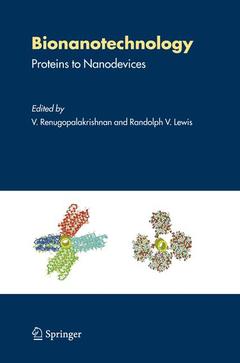Description
Bionanotechnology, Softcover reprint of hardcover 1st ed. 2006
Proteins to Nanodevices
Coordinators: Renugopalakrishnan V., Lewis Randy V.
Language: English
Publication date: 10-2010
296 p. · 16x24 cm · Paperback
Publication date: 04-2006
296 p. · 21x29.7 cm · Hardback
Description
/li>Contents
/li>Comment
/li>
Bionanotechnology is the key integrative technology of the 21st century and aims to use the knowledge, gathered from the natural construction of cellular systems, for the advancement of science and engineering. Investigating the topology and communication processes of cell parts can lead to invention of novel biological devices with exciting applications. Though microscale to nanoscale research offers an excellent space for the development of futuristic technologies, a number of challenges must be overcome. Due to paucity of a dedicated literature on the protein based nanodevices we bring you this monograph that combines collective research works of scientists probing into this fascinating universe of bionanotechnology. The monograph has been written with an aim of surveying engineering design principles of biomolecular nanodevices, prototype nanodevices based on redox proteins, bacteriorhodopsins and natural fibers, and touching upon the future developments in the field.




